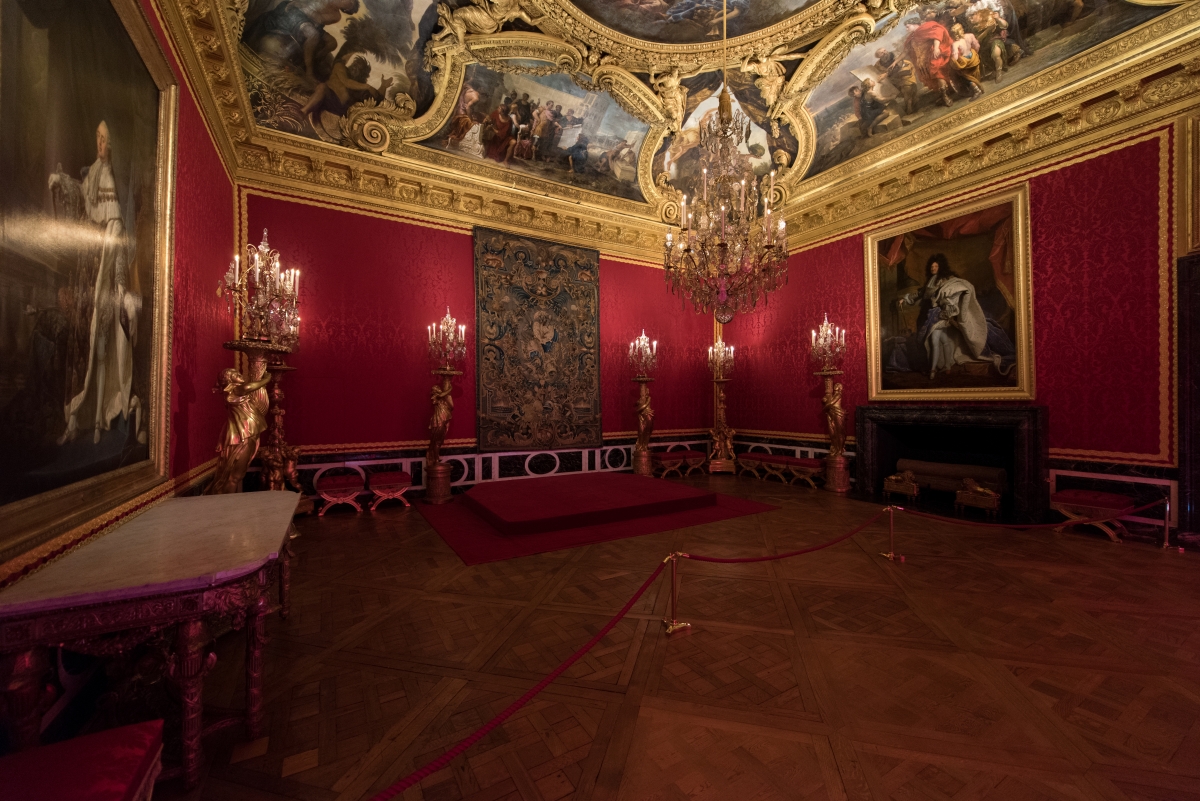A Royal Bedchamber of Grandeur
The Mercury Room, located in the King’s State Apartment at the Palace of Versailles, stands as an enduring symbol of opulence and historical depth. Originally designated as the royal bedchamber, it was a masterpiece of luxury designed to reflect the majesty of Louis XIV, the Sun King. Despite its purpose, the room was seldom used for sleep. Instead, it served as a vibrant social hub, particularly during winter months when the royal court transformed it into a grand salon, complete with gaming tables—a testament to the lively culture of Versailles.

Decor That Reflected a Kingdom’s Wealth
The Mercury Room was once adorned with exquisite brocade fabrics woven with gold and silver threads, embodying the unparalleled extravagance of Louis XIV’s reign. These textiles, shimmering with royal symbolism, showcased the wealth and artistic brilliance of 17th-century France. However, the splendor of the room was not immune to the realities of political conflict. During the War of Spanish Succession, these precious fabrics were sacrificed, melted down to fund the kingdom’s military campaigns. This act underscored the intertwined nature of art, politics, and sacrifice in the Sun King’s reign.
A Room of Historic Significance
While its primary function as a bedchamber was seldom realized, the Mercury Room occasionally played a pivotal role in the personal and political life of the monarchy. In 1700, it hosted Louis XIV’s grandson, the Duke of Anjou, who resided there for three weeks after being proclaimed King of Spain. This brief stay marked a historic transition as the young duke prepared to ascend the Spanish throne, solidifying France’s influence in Europe.

In a more somber chapter, the Mercury Room became the epicenter of mourning in September 1715. Following the death of Louis XIV, his coffin was placed in the room for eight days, transforming the space into a solemn chamber where the court and nation bid farewell to a monarch who had ruled for 72 years. This poignant moment marked the end of an era, forever linking the room to the Sun King’s legacy.
Restoration and Cultural Legacy
Today, the Mercury Room has been meticulously restored to its former glory, thanks to the efforts of Louis-Philippe, who repurposed Versailles as a museum. The bed, although a later addition, captures the grandeur of the original design. The room also houses two significant paintings cherished by Louis XIV: David Playing the Harp by Domenico Zampieri and Saint John on Patmos, attributed during his time to Raphael. These masterpieces not only enhance the room’s aesthetic appeal but also reflect the refined artistic tastes of the Sun King, who saw Versailles as a cultural beacon.

A Testament to Versailles’ Legacy
The Mercury Room encapsulates the layered history of Versailles, embodying both triumph and sacrifice. It speaks to the grandeur of Louis XIV’s reign while revealing the personal and political narratives that shaped France’s history. From its opulent decor to its role in pivotal moments, the room remains a vivid reminder of a bygone era, offering visitors a timeless connection to the artistry, ambition, and humanity that defined the Palace of Versailles.
This room is not merely a space; it is a stage where history’s drama unfolded—a testament to the enduring legacy of the Sun King and his iconic palace.

